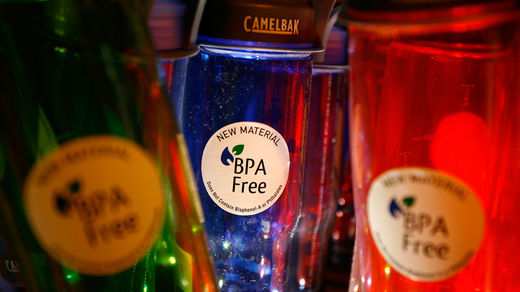
The study found these chemicals even in products that didn't contain BPA, a compound in certain plastics that's been widely criticized because it mimics estrogen.
Many plastic products are now marketed as BPA-free, and manufacturers have begun substituting other chemicals whose effects aren't as well known.
But it's still unclear whether people are being harmed by BPA or any other so-called estrogenic chemicals in plastics. Most studies of health effects have been done in mice and rats.
The new study doesn't look at health risks. It simply asks whether common plastic products release estrogen-like chemicals other than BPA.
The researchers bought more than 450 plastic items from stores including Walmart and Whole Foods. They chose products designed to come in contact with food - things like baby bottles, deli packaging and flexible bags, says George Bittner, one of the study's authors and a professor of biology at the University of Texas, Austin.
Then CertiChem, a testing company founded by Bittner, chopped up pieces of each product and soaked them in either saltwater or alcohol to see what came out.
The testing showed that more than 70 percent of the products released chemicals that acted like estrogen. And that was before they exposed the stuff to real-world conditions: simulated sunlight, dishwashing and microwaving, Bittner says."Then, you greatly increase the probability that you're going to get chemicals having estrogenic activity released," he says, adding that more than 95 percent of the products tested positive after undergoing this sort of stress.
But what about all those products marketed as BPA-free? That's a claim being made for everything from dog bowls to bento boxes these days.
The team concentrated on BPA-free baby bottles and water bottles, Bittner says, "and all of them released chemicals having estrogenic activity." Sometimes the BPA-free products had even more activity than products known to contain BPA.
The testing didn't show which chemicals are to blame, which is likely to be frustrating to manufacturers.
But Bittner says consumers should be encouraged that at least some plastic products had no estrogen-like activity. He says that shows it is possible to make these products.
Early reaction to the study was mixed. Some scientists wondered about the test's reliability. Others noted that wine and many vegetables also can act like estrogen. And a few observed that Bittner has a financial interest in the testing lab and in a company involved in making plastic products that don't release estrogenic chemicals.
On the other hand, groups that have warned about the potential dangers of BPA in the past seemed to welcome the new research.
"This is really helpful because they took a look at very common products," says Sonya Lunder, a senior analyst at the Environmental Working Group.
But the results suggest that concerns about plastics can't be solved by worried consumers at the checkout counter, Lunder says. It's a problem for government, she says.
"Regulatory agencies need to study the effect of chemicals leaching out of plastic," Lunder says, adding that an EPA program formed more than a decade ago to do this sort of research still hasn't produced many results.
Until scientists come up with more definitive answers, Lunder says, worried consumers can follow the old advice to avoid putting those baby bottles and other plastic products in dishwashers or microwaves.
"We've long cautioned consumers to avoid extreme heat and cooling for plastics, to discard scratched and worn plastics and we feel like this [study] validates one of our many concerns," she says.
To Fear Or Not To Fear Plastics?
Exactly how BPA affects humans, and how serious its effects are, are still very much up for debate. The U.S. government generally advocates caution and more research, but agencies have issued a range of hesitant warnings. The National Toxicology Program, a division of the National Institutes of Health, says it has "some concern" about potential BPA exposures to the brains and prostate glands of fetuses, infants and children. Other agencies say they have lingering, unresolved "questions" about the chemical.
Those questions largely circle around how prolonged exposure to the chemical in childhood or adulthood could affect reproduction and growth; how low-dose exposure at sensitive developmental stages could affect children and babies later in life; and how parental exposure could affect the next generation. Studies have shown links between BPA and cancer, diabetes, heart disease, and a host of other illnesses.
One major sticking point for scientists is the challenge of drawing conclusions from hundreds of studies, each using different animals (mice and rats among them), doses, and routes of exposure. As the Environmental Protection Agency has noted, "there is controversy about whether effects seen at lower doses in animals are meaningful and relevant to humans." And scientists have also wondered whether rodents are more sensitive to the chemical than us because they metabolize it differently.
Last year, the NIH launched a new round of studies, all with the same methodology, designed to answer the some of the niggling questions and help the government provide clearer guidance than it's been able to so far.



Lets go back to glass please